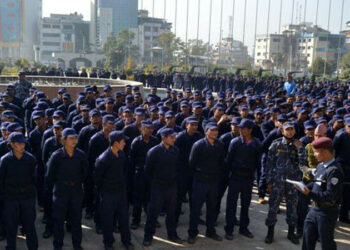NEW DELHI: A recent study covering 13 towns across four countries — Nepal, India, Bangladesh, and Pakistan — in the Hindu Kush Himalayan region shows the Himalayan towns are facing increased water insecurity in the wake of inadequate urban planning coupled with a rapidly changing climate.
The study — the first-of-its-kind on the Hindu Kush Himalayan — shows that the interlinkages of water availability, water supply systems, rapid urbanization, and consequent increase in water demand (both daily and seasonal) are leading to increasing water insecurity in towns.
This water insecurity is attributed to poor water governance, lack of urban planning, poor tourism management during peak season, and climate-related risks and challenges.
The study, published in the journal ”Water Policy”, also shows that communities are coping through short-term strategies such as groundwater extraction, which is proving to be unsustainable.
The authors are Anjal Prakash and David Molden.
While Prakash is the Research Director and Adjunct Associate Professor with the Bharti Institute of Public Policy of the Indian School of Business in Hyderabad, Molden is the Director-General with the International Centre for Integrated Mountain Development (ICIMOD), an intergovernmental organization based in Kathmandu in Nepal.
There is a lack of long-term strategies for water sustainability in urban centers, and this requires the special attention of planners and local governments, says the study.
Urbanization has pulled people from rural areas in the Hindu Kush Himalayan region into nearby urban centers.
Although only three percent of the total Hindu Kush Himalayan population lives in larger cities and eight percent in smaller towns, projections show that more than 50 percent of the population will be living in cities by 2050.
This will naturally place tremendous stress on water availability.
The study shows that the water demand-supply gap in eight of the surveyed towns is 20 to 70 percent.
There is a high dependence on springs (ranging between 50 and 100 percent) for water supply in three-fourths of the urban areas.
Under current trends, the demand-supply gap may double by 2050. A holistic water management approach that includes springshed management and planned adaptation is, therefore, paramount for securing safe water supply in the urban Himalaya.
Along with springshed management, other options could be explored in the wake of rising water demand and use.
From the case studies of the Himalayan towns, it is evident that increasing urbanization and climate change are two critical stressors that are adversely affecting the biophysical environment of the urban Himalaya.
With development plans and policies focusing more on rural areas, issues surrounding urban environments have been sidelined.
Across the region, the encroachment and degradation of natural water bodies (springs, ponds, lakes, canals, and rivers) and the growing disappearance of traditional water systems (stone spouts, wells, and local water tanks) are evident, says the study.
The degradation and reclamation of water bodies affect wetland ecosystems and reduce retention capacities that prevent flooding.
Consequently, urban drainage and flood management systems are being impaired.









Comment